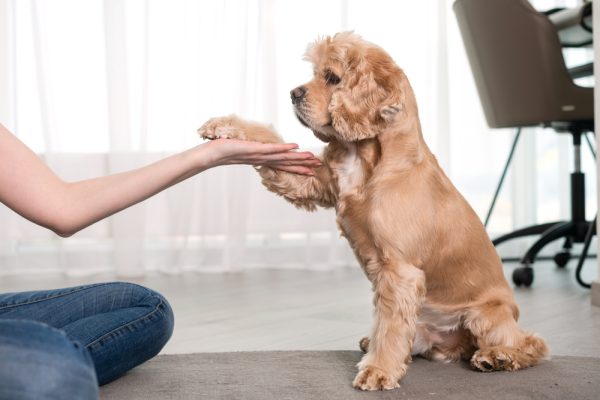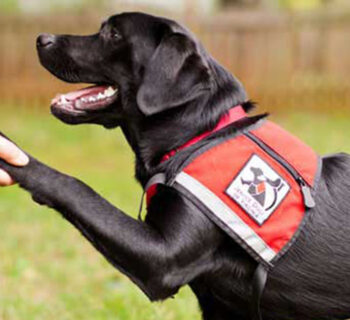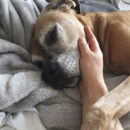Bringing a new puppy into your home is an exciting and heartwarming experience – however, with that excitement comes the responsibility of teaching your puppy how to behave appropriately. While puppy training can be rewarding, it’s easy to make mistakes along the way. In this post, we’ll discuss common puppy training mistakes and provide tips on how to avoid them, ensuring a happy, well-behaved companion for years to come.
Lack of Consistency
One of the biggest mistakes new puppy owners make is inconsistency in training. Dogs thrive on routine and clear expectations. If you allow your puppy to jump on guests one day but scold them for doing it the next, they’ll become confused. It’s essential that all members of the household are on the same page regarding the rules. Consistency in commands, rewards, and boundaries will help your puppy understand what is expected of them.
- Tip: Establish a set of house rules before your puppy arrives and make sure everyone follows them.
Neglecting Socialisation
Socialisation is crucial for puppies, yet it’s often overlooked. Puppies that aren’t exposed to a variety of people, animals, and environments during their early months may develop behavioural problems, such as fear or aggression, later in life. Socialising your puppy early helps them become a confident and well-adjusted dog.
- Tip: Take your puppy to different places, introduce them to various people, and arrange playdates with other vaccinated dogs to help them learn how to interact in diverse situations.
Using Harsh Punishments
Many new puppy owners assume that using punishment, such as yelling or physical correction, is an effective way to curb bad behaviour. In reality, harsh punishments can lead to fear, anxiety, and even aggression. Positive reinforcement is a much more effective training method. Rewarding your puppy for good behaviour encourages them to repeat those actions, while ignoring or redirecting unwanted behaviour helps them learn what is inappropriate.
- Tip: Use treats, praise, and toys as rewards to reinforce good behaviour, and be patient with your puppy during the learning process.
Skipping Basic Obedience Training
It can be tempting to skip formal obedience training, especially when your puppy is small and their misbehaviour seems manageable. However, teaching basic commands like “sit,” “stay,” and “come” lays the foundation for a well-behaved adult dog. A puppy that knows these commands will be easier to manage in various situations, from trips to the park to interactions with guests.
- Tip: Begin training your puppy as early as possible, and consider enrolling them in a basic obedience class to ensure they learn essential commands.
Training for Too Long
Puppies have short attention spans, and long training sessions can lead to frustration for both you and your dog. Overloading your puppy with information in one session can cause them to lose focus and forget what they’ve learned. Instead, keep training sessions short and fun to maintain their interest and reinforce learning.
- Tip: Aim for multiple short sessions of 5-10 minutes throughout the day rather than a single long session.
Not Using Crate Training
Some new puppy owners feel that crate training is unfair or cruel, but when done correctly, a crate can become a safe space for your puppy. Crate training helps with housebreaking, reduces destructive behaviour, and provides your puppy with a secure area to retreat to when they need rest. Avoid using the crate as a form of punishment, as this can make your puppy anxious and reluctant to use it.
- Tip: Make the crate a positive experience by introducing it slowly and using treats or toys to encourage your puppy to spend time inside.
Ignoring Your Puppy’s Natural Instincts
Dogs are naturally curious and have strong instincts, such as chewing, digging, and barking. Ignoring these instincts without providing proper outlets for them can lead to frustration and destructive behaviour. For example, puppies need to chew to relieve teething discomfort, so giving them appropriate chew toys can prevent them from chewing on furniture or shoes.
- Tip: Provide your puppy with stimulating toys, puzzles, and plenty of exercise to keep them mentally and physically engaged.
Relying Solely on Verbal Commands
While verbal commands are an important part of training, relying on them exclusively can be limiting. Puppies often respond better to a combination of verbal and non-verbal cues, such as hand signals or body language. Dogs are observant and will pick up on your actions as well as your words.
- Tip: Incorporate hand signals into your training to reinforce verbal commands, helping your puppy learn more effectively.
Not Securing Boundaries Outdoors
As your puppy grows more curious about the world, keeping them safe becomes a top priority. One often overlooked aspect of training is ensuring that your outdoor space is secure. Some puppies may try to escape or chase after animals, which can lead to dangerous situations. Understanding how do electric dog fencing solutions work can help keep your puppy safe while giving them the freedom to explore your yard. These systems create invisible boundaries, offering a practical solution for containing your dog without traditional fences.
Being Impatient with Results
Training a puppy takes time, patience, and consistency. It’s easy to become frustrated when your puppy doesn’t catch on as quickly as you’d like, but every dog learns at their own pace. Being patient and celebrating small victories will make the training process more enjoyable for both of you.
- Tip: Focus on positive reinforcement and remain consistent with your efforts. Remember, progress might be slow at times, but persistence will pay off in the long run.
Puppy training is a journey that requires patience, consistency, and an understanding of your dog’s natural behaviours
Take the time to invest in proper training, and both you and your puppy will reap the rewards for years to come. By ensuring you provide a safe and structured environment, and taking advantage of tools such as electric dog fencing, you can set your puppy up for success. Now’s the perfect time to start your puppy training journey with confidence!










